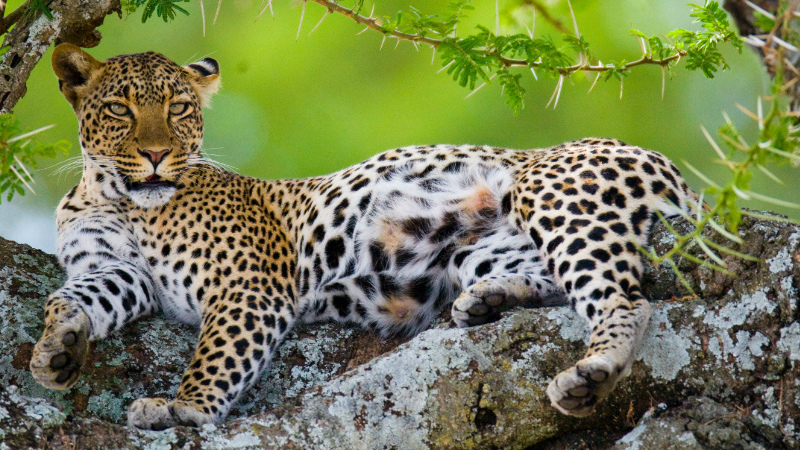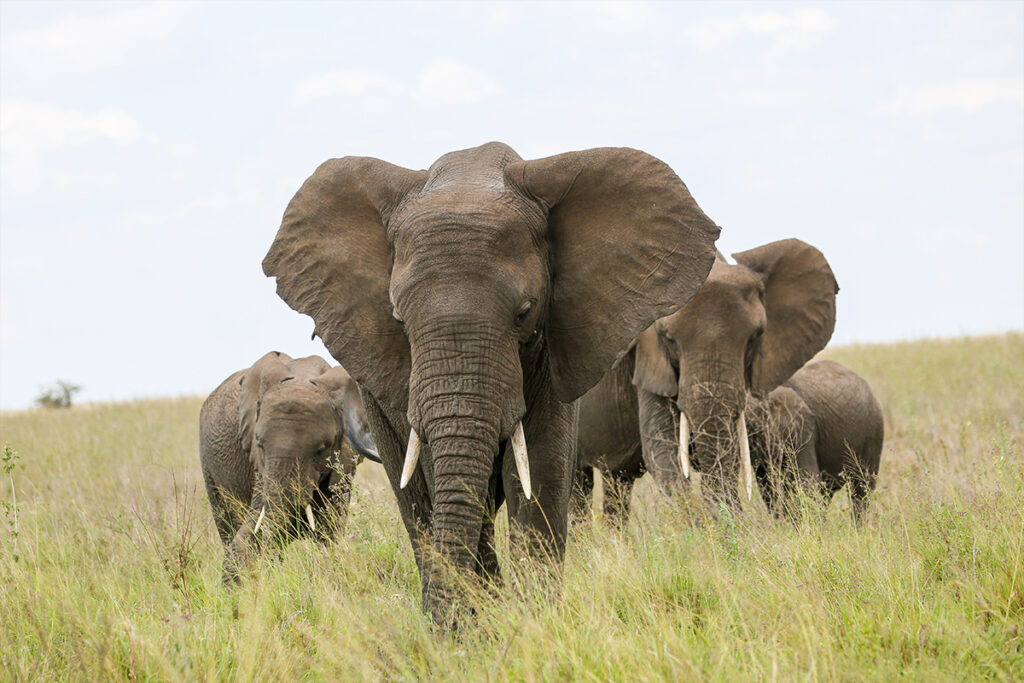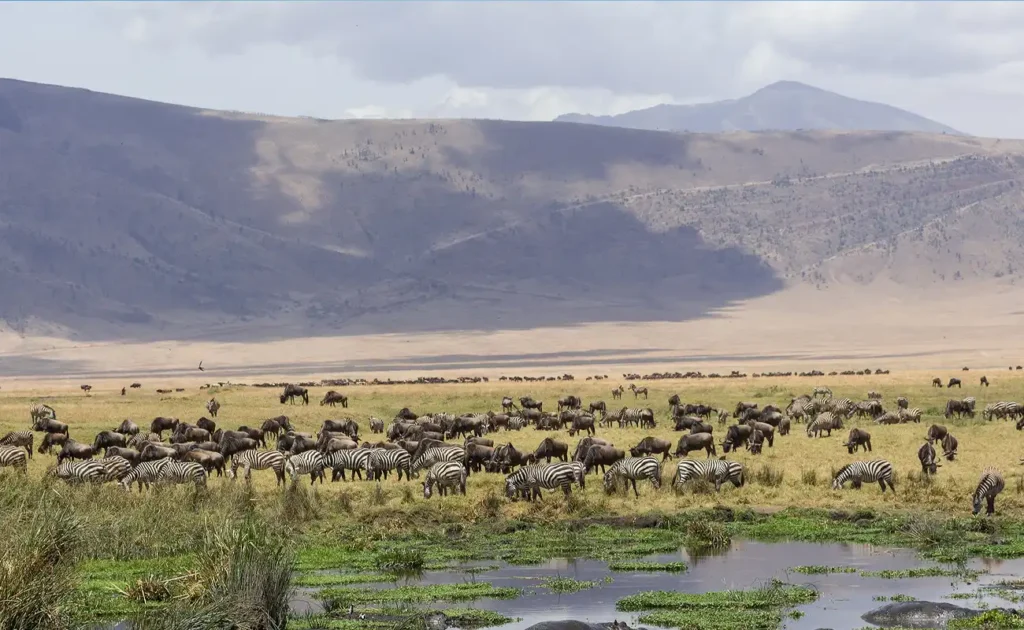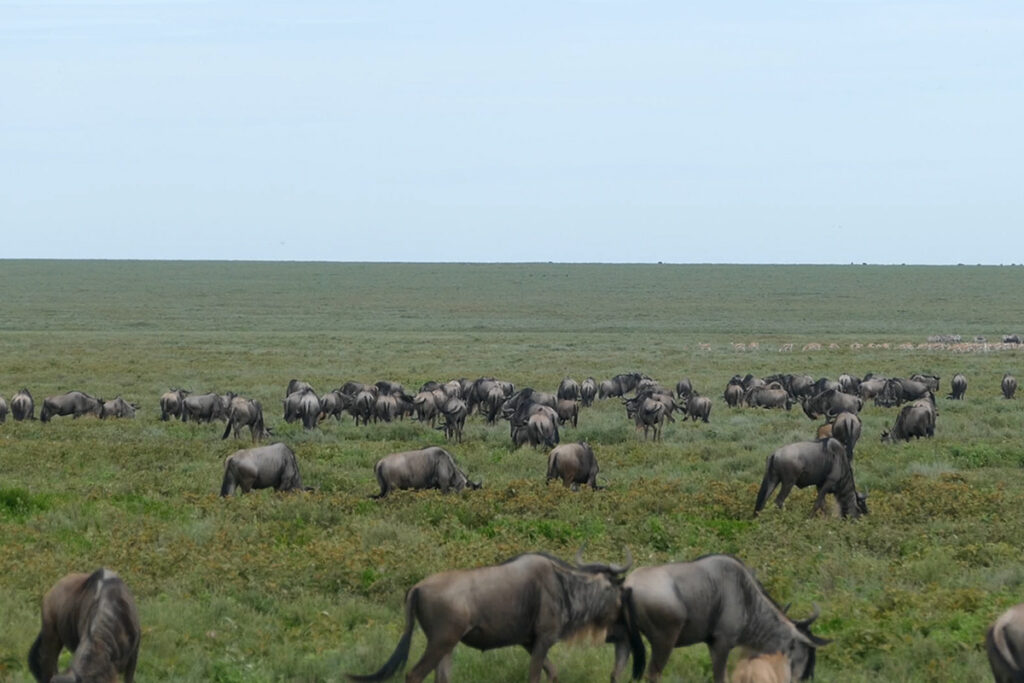With Tanzania housing one of the most diverse wildlife ecosystems in the world, a visit unveils creatures beyond imagination—yet, the leopard remains the star of hidden profiles. A master of stealth and camouflage, its presence often goes unnoticed despite its wide distribution across the Tanzanian landscape. Perhaps it’s the cat’s mystical blend of secrecy and majesty that keeps the chase exhilarating for wildlife aficionados and research experts alike.
The Serengeti and Ruaha National Parks stand as premier destinations, where leopard sightings are not just a possibility but a thrilling reality for those who tread these corridors. Historically, these regions have served as sanctuaries for preserving this elusive species, boasting a higher density of leopards compared to other African destinations. According to a recent wildlife survey, approximately 40% of these secretive cats find refuge within Tanzania’s protected areas, marking the nation as a cornerstone for leopard observation and conservation.

Tanzania Leopard Sightings: Top Spots for Elusive Cats
Visiting Tanzania to catch a glimpse of the elusive leopard offers an unparalleled experience. The Serengeti National Park tops the list for many wildlife enthusiasts, providing a perfect mix of open plains and woodlands, an ideal habitat for these stealthy cats. Furthermore, this park is part of the annual wildebeest migration route, which can attract curious leopards. Ruaha National Park also provides a fantastic opportunity, with its diverse landscape of baobab groves and hills. Leopards thrive here due to the abundance of prey and natural hiding spots.
In addition to the popular Serengeti and Ruaha, the Selous Game Reserve stands out. This expansive reserve is home to one of the largest concentrations of wildlife in Africa, including many leopards. Sightings here are frequent and often rewarding for patient visitors. The reserve’s vast, untouched nature provides an authentic safari experience, unmatched by its more developed counterparts. Observing leopards in such an unspoiled setting is a rare treat.
For those seeking a more intimate experience, Tarangire National Park is another excellent location. Known for its large elephant herds, this park also boasts a healthy leopard population. Tarangire’s varied landscape, including swamps, bushland, and baobab trees, creates multiple viewing opportunities. Visitors often spot leopards resting in the trees, their favored daytime hiding spots. The park’s quieter atmosphere compared to other locations also enhances the chances of a successful safari.
To maximize the chances of leopard sightings, it is essential to plan your visit during peak activity times. Early morning and late afternoon are typically the best times, as leopards are most active during these cooler hours. Joining a guided tour with experienced trackers can also significantly improve your chances. Expert guides know the leopards’ habits and preferred areas, making it easier to locate these elusive cats. Additionally, having the right equipment, like a good pair of binoculars, can make a significant difference.
The Serengeti National Park: A Premier Destination
The Serengeti National Park is an iconic wildlife sanctuary in Tanzania, recognized globally for its vast ecosystems and stunning landscapes. This park spans over 14,750 square kilometers, making it one of Africa’s largest. Visitors are drawn here not only for its beauty but also for the chance to witness wildlife, including leopards, in their natural habitat. The park’s diverse environments include grasslands, savannas, and riverine forests, ideal settings for leopards to hunt and roam. Every year, millions of tourists flock to the Serengeti, hoping for a magical encounter with nature.
One major attraction of the Serengeti is the famous wildebeest migration, one of the world’s most thrilling natural events. During this time, millions of wildebeest, zebras, and other animals move through the park in search of fresh grazing. This massive movement creates prime hunting opportunities for stealthy predators like leopards. Viewing this dramatic spectacle is a once-in-a-lifetime experience for many travelers. It offers unique photo opportunities and unforgettable memories.
To enhance a safari experience in the Serengeti, consider joining a guided tour. Expert guides provide valuable insights into the behavior and patterns of predators such as leopards. They use their local knowledge to locate the best viewing spots and share interesting facts about the wildlife. Guides often know the specific territories of local leopards, increasing the chances of sightings. Moreover, safety measures are strictly adhered to, ensuring a secure adventure in the park.
When planning a visit to the Serengeti, timing can greatly influence the experience. The best months to visit for leopard sightings are between June and October. Weather during this time is dry, making the animals more visible as they gather near water sources. Visitors should prepare for varied climate conditions, as temperatures can vary between day and night. Packing essentials include sunscreen, a hat, and binoculars for an immersive safari experience.
Leopard Behaviour and Habitat in Tanzania
Leopards are fascinating creatures known for their solitary and nocturnal habits, choosing the night to hunt with precision and stealth. In Tanzania, these majestic cats prefer dense bushlands and forested areas, which offer excellent camouflage. Their keen senses and adaptable nature allow them to thrive in various environments, from grasslands to rocky hillsides. Leopards are skilled climbers, often dragging their prey up into trees to avoid competing predators. This arboreal lifestyle is key to their survival strategy.
Tanzania’s landscape offers leopards a unique mix of habitats, supporting their diverse needs and behaviors. Rivers and waterholes attract thirsty prey, providing ideal hunting grounds for these opportunistic hunters. Leopards have a vast range, with territories often overlapping, yet they manage to coexist without frequent conflict. Their ability to adapt to different terrains and climates makes them hard to spot, adding to their mystique. With patience and a bit of luck, the elusive leopard may reveal itself.
The diet of leopards is varied and depends largely on availability, showcasing their adaptability. Typical prey includes antelope, deer, and even smaller mammals like rabbits and birds. Their power and agility make them formidable hunters capable of taking down larger animals. When hunting, leopards use a combination of stealth and quick bursts of speed to catch their prey. This adaptable diet aids their survival in the ever-changing African wilderness.
Understanding leopard behavior can greatly enhance the chances of seeing these creatures in the wild. Tracks, droppings, and kill sites serve as clues to their presence and movement patterns. Rangers and guides often look for signs like scratch marks on trees or scats along trails. Their behaviors involve both hunting and resting, generally active during dawn, dusk, and nighttime. Observing a leopard’s life, even briefly, provides a glimpse into the intricate balance of nature in Tanzania.
Best Time for Leopard Sightings in Tanzania
The best time for spotting leopards in Tanzania is during the dry season, which runs from June to October. During this period, the vegetation is sparse and animals cluster around water sources, making them easier to find. Leopards, like many other predators, use these conditions to their advantage. They are also more likely to be seen hunting or resting during daylight hours. This increases the chances of observing these elegant creatures in action.
Early mornings and late afternoons are prime times for leopard sightings. Leopards are crepuscular, which means they are most active during dawn and dusk. This behavior allows them to avoid the midday heat. Visitors should plan their safari trips around these times to maximize their chances. Guided tours often start very early or resume in the late afternoon for this reason.
Weather patterns also play a crucial role in leopard visibility. The dry season offers clear skies and moderate temperatures, creating perfect conditions for wildlife viewing. Heavy rains, which occur from November to May, can make some areas inaccessible. The wet season, however, does offer lush landscapes and fewer tourists, which may appeal to some visitors. Nonetheless, the increased foliage can make it harder to spot leopards.
National parks and reserves such as the Serengeti, Ruaha, and Selous Game Reserve are highly recommended for leopard sightings during these optimal months. These areas are well-known for their dense leopard populations. Expert guides in these parks know the best spots to observe leopards, often using recent sightings to inform their tracking. Take advantage of their knowledge for a more successful safari experience.
Using the right equipment can greatly enhance the leopard sighting experience. High-quality binoculars and cameras with good zoom capabilities are essential. Guides often provide this gear, but bringing your own ensures you are always ready. Additionally, wearing neutral-colored clothing helps blend in with the environment and reduces the chances of startling wildlife. Comfortable walking shoes are also a must for long treks on uneven terrain.
Tips for a Successful Leopard Safari
Embarking on a leopard safari requires careful planning to enhance the likelihood of sightings. One essential tip is to choose the right time of year, with the dry season being the best. During this period, sparse vegetation makes leopards easier to spot. Timing your trips for early morning or late afternoon increases the chance of witnessing their natural behaviors. Being patient and staying observant can lead to exhilarating encounters with these elusive cats.
Hiring an experienced guide is crucial for a successful safari. Guides know the leopard hotspots and can provide insights into the animal’s habits. They often communicate with other guides to track recent leopard movements, improving the probability of sightings. Additionally, guides are well-versed in safety protocols, ensuring a safe and enjoyable experience. Trusting their expertise is key to making the safari memorable.
Equipping yourself with the right tools can make a big difference in the safari experience. A good pair of binoculars is essential for scanning the landscape. Cameras with zoom capabilities help capture these secretive cats in their natural habitat. Dressing appropriately in neutral colors and comfortable shoes is also important. This helps in blending with the environment and allows for comfortable trekking.
Maintaining silence and respecting the leopard’s space are important for a successful observation. Loud noises can frighten the animals away, diminishing the chance of sightings. Staying quiet in the vehicle or while walking keeps the wilderness experience authentic. Visitors should always follow the guide’s instructions to ensure safety. Observing these guidelines makes for a respectful and enjoyable safari.
Another valuable tip is to set realistic expectations for the safari experience. While leopards are a highlight, appreciating other wildlife and the unique landscapes of Tanzania enriches the adventure. African safaris offer sights of majestic elephants, graceful giraffes, and vibrant birdlife. Keeping an open mind can lead to unexpected and unforgettable discoveries. Enjoying each moment without pressure enhances the overall journey.
Conservation Efforts for Leopards in Tanzania
Conservation efforts in Tanzania play a crucial role in protecting leopard populations. These majestic animals face threats from habitat loss, poaching, and human-wildlife conflict. To combat these challenges, various wildlife organizations work tirelessly to create and maintain protected areas. These sanctuaries provide safe havens for leopards and other wildlife. By preserving their natural habitats, these efforts aim to support healthy and thriving leopard populations.
Community involvement is a key aspect of conservation in Tanzania. Education programs teach locals the importance of biodiversity and the role leopards play in it. By involving local communities, conservationists aim to reduce human-wildlife conflict and promote coexistence. Programs that encourage alternative livelihoods, such as eco-tourism, help communities see the value in conserving these animals. This collaborative approach is essential for long-term success.
Technology also plays a significant part in leopard conservation. Tracking collars equipped with GPS technology help monitor leopard movements and identify critical areas for protection. Data collected from these devices provide invaluable insights into leopard behavior and habitat use. Researchers use this information to create effective conservation strategies. Employing technology ensures a more precise and informed approach to conservation efforts.
Partnerships between government agencies and international organizations strengthen conservation efforts in Tanzania. These collaborations bring much-needed funding and expertise to local initiatives. Projects often focus on anti-poaching measures and habitat restoration. Sustainable funding models ensure the continuity of conservation programs. Together, these partnerships make a substantial impact on safeguarding Tanzania’s leopards.
Public awareness campaigns play an important role in engaging the broader community in conservation. Through educational materials and media campaigns, people learn about the significance of preserving leopard populations. These efforts inspire future generations to prioritize wildlife conservation. Encouraging positive attitudes toward leopards and their ecosystems is crucial. Raising awareness builds a conservation-minded society committed to protecting Tanzania’s natural heritage.
Key Takeaways
- Tanzania is a top destination for spotting elusive leopards.
- The Serengeti, Ruaha, and Selous are prime leopard habitats.
- Expert guides enhance your chances of seeing leopards.
- Leopard sightings peak during Tanzania’s dry season months.
- Diverse environments offer rich viewing and safari experiences.



